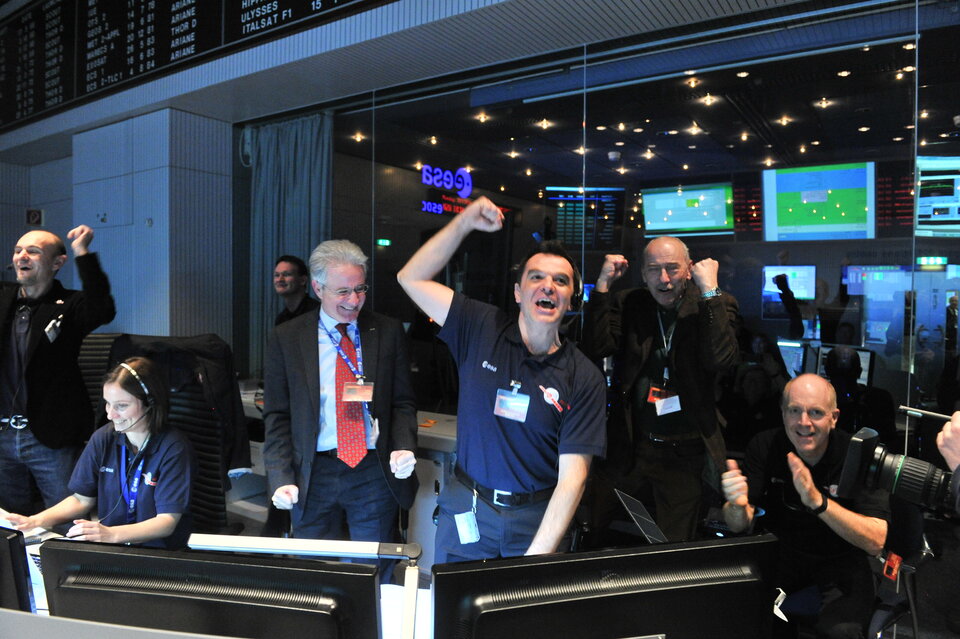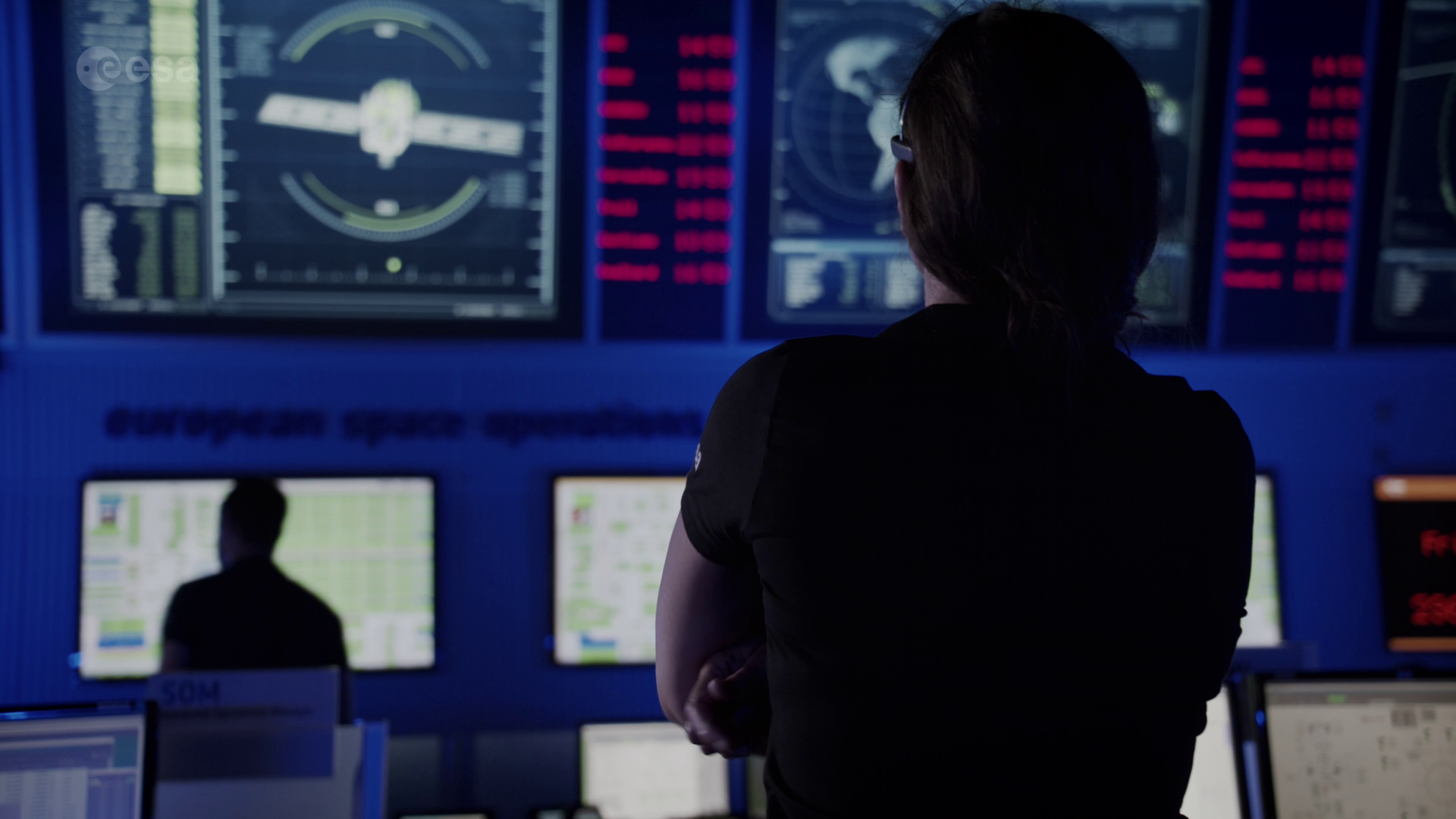Global S&T Development Trend Analysis Platform of Resources and Environment
| Space is hard - mission control after Apollo 13 | |
| admin | |
| 2020-04-17 | |
| 发布年 | 2020 |
| 语种 | 英语 |
| 国家 | 欧洲 |
| 领域 | 地球科学 |
| 正文(英文) | Apollo 13 has been called ‘NASA's finest hour’. What was meant to have been the third lunar landing in April 1970, 50 years ago, became a struggle to safely return the crew of three when an oxygen tank explosion crippled their Apollo spacecraft. In the end, it was a major success. The interaction between the Apollo 13 astronauts and mission operations teams on the ground remains one of the finest examples of leadership and teamwork in modern history, and ESA’s mission control, at the European Space Operations Centre (ESOC), is based on the same approach.
ESA's Main Control Room in Darmstadt, Germany Critical early daysTypically, the teams in ESOC’s Main Control Room assume control of a mission shortly after launch, as soon as ground stations receive the first radio signal from space. This moment is called ‘AOS’ – or ‘acquisition of signal’. Launch success is confirmed once mission control has established contact (via the ground station) with the spacecraft, telemetry and other status data are flowing to Earth and a preliminary assessment has deemed the initial orbit to be correct. 
For a few days after launch, during the launch and early orbit phase, the Mission Control Team is ‘on console’ 24 hours a day, overseeing a critical series of actions designed to configure the satellite into a stable operational mode and fully check out the health of all systems - troubleshooting any problems that arise. With a spacecraft safely in orbit, the control team moves out of the Main Control Room and into a dedicated control room for their mission. Here, they settle in for hopefully years of routine daily activities. But, things aren’t always ‘routine’. Not all missions progress smoothly, and in the harsh environment of space, unexpected events sometimes occur. 
For every alarm raised, spacecraft controllers identify the anomaly and take immediate recovery actions, using the flight control procedures developed at mission control before launch. The key elements of flight operations success at ESA include long-term planning, dealing with changing conditions as the mission progresses through eclipses or orbital evolutions and – always – anticipating the unexpected. Accentuate the negativeBelieve it or not, there are people at mission control who spend their days thinking up every possible way a mission could fail, and then inflicting these scenarios on control teams through a series of demanding simulations. Before launch, the Mission Control Team goes through months of ‘sim training’, where critical operations scenarios are realistically played out, failures in space and ground systems are introduced, and even external set-backs are emulated. Perhaps a vital member of the team becomes sick, a storm creates a power cut across the region, or a solar flare blinds their spacecraft – how will they react? 

The Burn
Access the video Simulations can be stressful, time consuming and throw up unexpected or unlikely multiple-failure scenarios. By going through them and practicing how to react, when the time comes to fly for real, ideally no unplanned event is totally unexpected and teams are as prepared and calm as can be. 
Since the 1960s, the pace of missions operations, and their complexity, has steadily increased. ESA’s mission control has built up the tools and expertise required to manage these missions and, today, its control teams deal with missions that range from Earth observation and in-orbit observatories to solar system exploration. The successful return of Apollo 13 lives on in our collective memories. It is an important reminder that ‘space’ is hard, an unforgiving environment that doesn’t tolerate mistakes. But by accumulating flight experience, training for every possible eventuality, and the skills and teamwork to ‘work the problem’, ESA’s flight controllers embody that same spirit as they fly complex European space missions today. |
| URL | 查看原文 |
| 来源平台 | European Space Agency |
| 文献类型 | 新闻 |
| 条目标识符 | http://119.78.100.173/C666/handle/2XK7JSWQ/246247 |
| 专题 | 地球科学 |
| 推荐引用方式 GB/T 7714 | admin. Space is hard - mission control after Apollo 13. 2020. |
| 条目包含的文件 | 条目无相关文件。 | |||||
| 个性服务 |
| 推荐该条目 |
| 保存到收藏夹 |
| 查看访问统计 |
| 导出为Endnote文件 |
| 谷歌学术 |
| 谷歌学术中相似的文章 |
| [admin]的文章 |
| 百度学术 |
| 百度学术中相似的文章 |
| [admin]的文章 |
| 必应学术 |
| 必应学术中相似的文章 |
| [admin]的文章 |
| 相关权益政策 |
| 暂无数据 |
| 收藏/分享 |
除非特别说明,本系统中所有内容都受版权保护,并保留所有权利。
修改评论